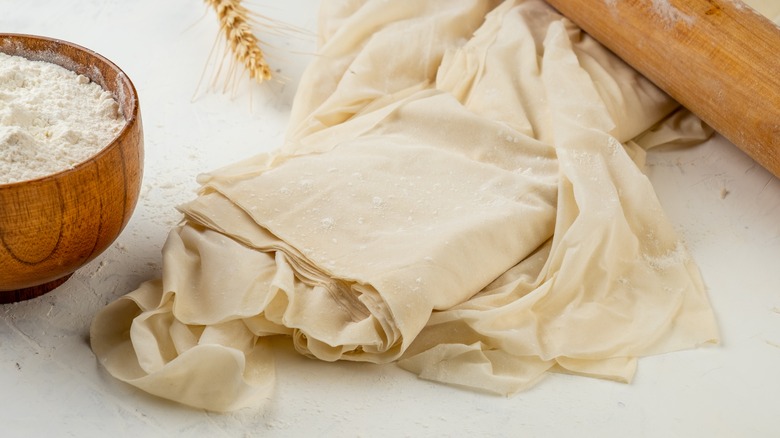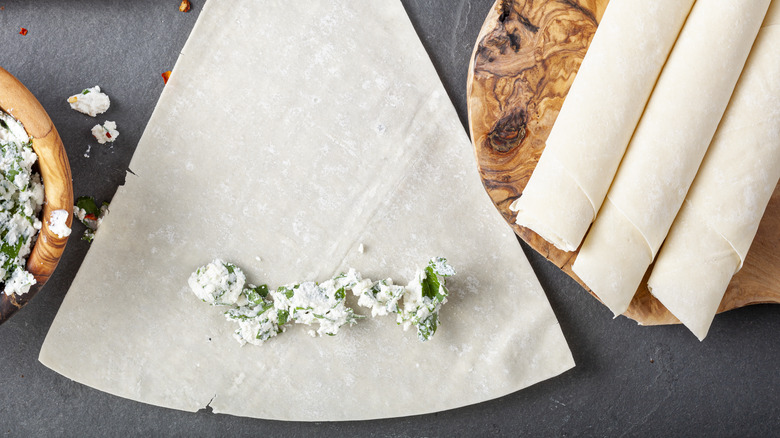Here's What You Can Do If You Tear Phyllo Dough By Mistake
Phyllo dough is the hero behind your favorite flaky, crispy pastries, such as baklava, samosas, and pies. Also known as filo or fyllo dough, it is originally from Greek, Mediterranean, Middle Eastern, and Balkan cuisines and gets its name from the Greek word for "leaf." Phyllo sheets, characteristically paper-thin and unleavened, are similar to puff pastry but creates even crispier layers due to its lower fat content. Having no cholesterol and no saturated or trans fats — plus a mere 160 calories per five sheets — it's often preferred as a lighter alternative to doughs for pies, pizzas, tarts, strudels, and rolls.
While you can traditionally make phyllo dough from scratch using flour, warm water, oil, salt, and vinegar, you can alternatively find pre-made phyllo dough in the freezer section of your grocery store. Regardless, working with either kind of dough can be a challenge because it is extremely delicate. The fine layers often start sticking to each other when they are extracted from the packaging. Even worse, they dry out and tear easily, which is why they require a quick and careful hand to stay intact. Fortunately, there's an easy way to remedy your phyllo dough if it rips.
Turn your torn bits of phyllo dough into one new sheet
One of "The Five Rules" for using phyllo dough, as advocated by My Food Book, is letting the thawed dough come to room temperature before working with it. Making sure your hands and worktop are dry (to prevent the dough from snagging or absorbing excess liquids), cover the rolled-out dough with a sheet of wax paper and then a damp towel to preserve its moisture. Ideally, you'll remove just one sheet of dough at a time while keeping the rest covered and moist.
If you follow these rules but your phyllo dough sheets still tear, worry not: This is a fairly common snafu that can be easily remedied, since phyllo is secretly a very forgiving dough. One sneaky solution is to patch the torn pieces together using butter or oil as a glue. The Spruce Eats recommends positioning this salvaged portion in a middle layer of the pastry, as it will not ruin how the pastry looks when baked.
A similar hack offered by Miss Vickie is to combine all the torn bits of phyllo dough and stick them onto another phyllo sheet using just enough butter or oil for adhesion. The layers will quickly meld together like magic, and the cracks won't even show in the finished pastry! With this trick up your sleeve, you're sure to achieve beautiful, golden brown phyllo perfection.

